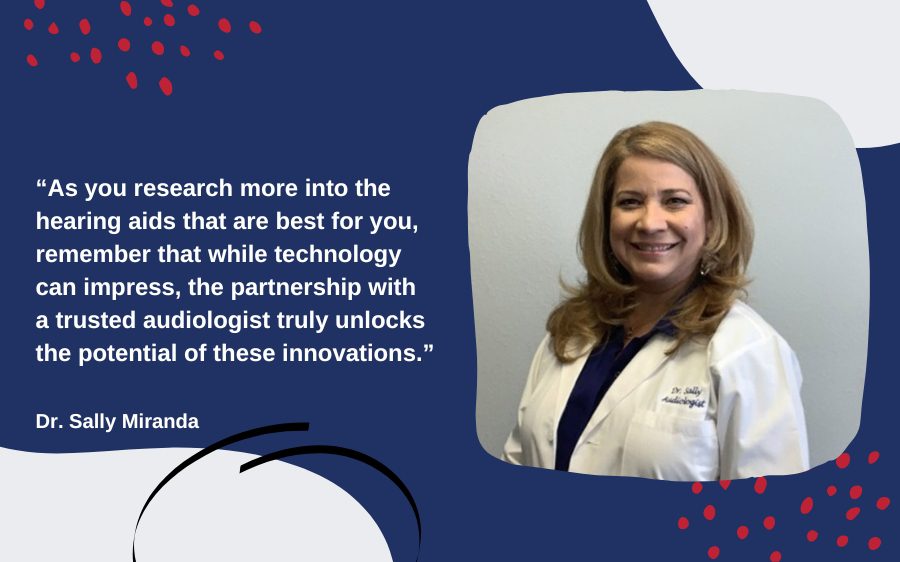Hear In Texas
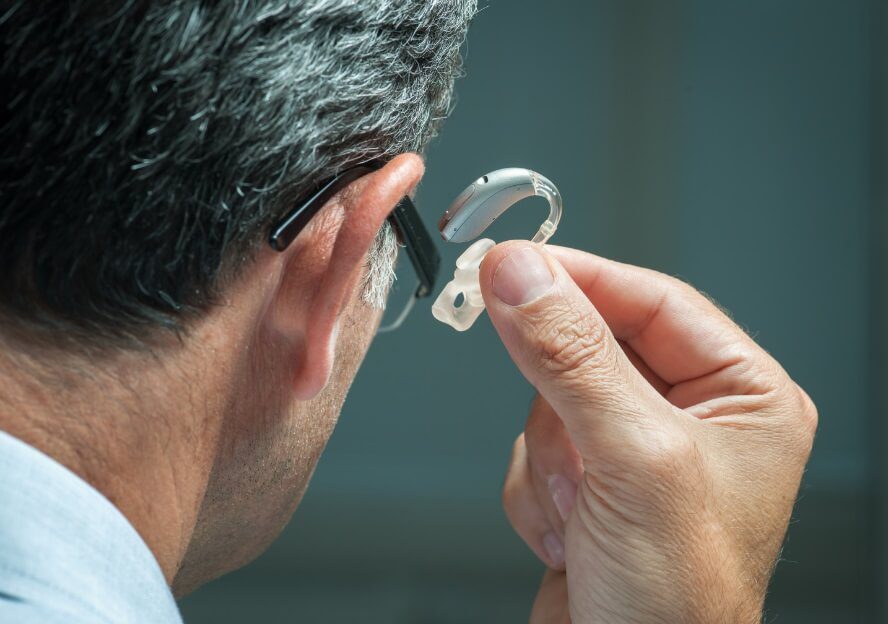
Hear In Texas Partners With Major Hearing Aid Manufacturers
The choices we offer our patients include a broad range of technologies from brand-name manufacturers, like:
- Resound (distribution and repair)
- Starkey (distribution and repair)
- Widex (distribution and repair)
- Phonak (distribution and repair)
- Signia (distribution and repair)
- Oticon (distribution and repair)
- Jabra (distribution and repair)
With so many available options, you’ll appreciate the help our hearing aid specialist can provide when it comes time to choose the device that best fits your needs and lifestyle.




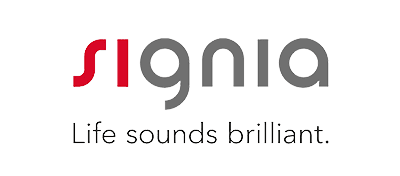

Is Your Loved One Living With Hearing Loss?
“At our halloween party, the family is outside and we’re interacting, and mom is just sitting there”
Our Hearing Aid Specialist Can Help You Choose
- Power requirements necessary to address your specific level of hearing loss
- Your manual dexterity and visual capabilities
- The budget you have to work with
- Wearing discretion and cosmetic concerns
- Skin sensitivities
- Anatomical/medical considerations
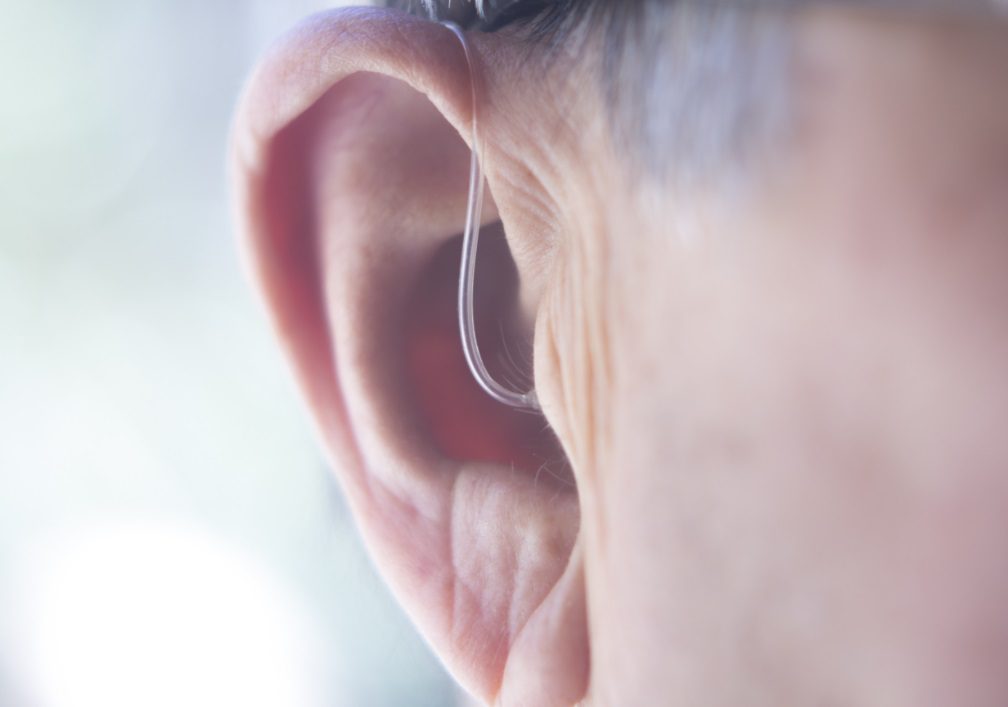
FAQs About Hearing Aids
Q. How Will I Know If I Need A Hearing Aid?
Your family may have noticed you are struggling with your hearing and are advising you to have your hearing checked. Struggling to communicate well with others, keeping up with your typical lifestyle, and frustration when it comes to enjoying conversations in a noisy restaurant or at a social event are other indicators, but the only way to know the truth is to consult an audiologist for a professional, comprehensive hearing assessment.
Q. Will A Hearing Aid Cure My Hearing Loss?
No. Hearing aids are “aids,” which means they help make it easier to hear through sound processing and amplification, but they cannot restore the natural functioning of your ear. Hearing aids do slow down the progression of deterioration as well as prevent cognitive decline and help correct issues with balance and vertigo.
Q. How Long Will My Hearing Aid Last?
The typical hearing aid lasts between five to six years. With plenty of TLC, regularly scheduled maintenance, tune-ups, and repair, you can extend their life, but most audiologists recommend upgrading every five years in order to take advantage of the newest available technologies in a rapidly changing industry.
Q. Do Hearing Aids Use Special Batteries?
Yes. Most modern hearing aids use zinc-air batteries made specifically for hearing aids. They come in a variety of sizes to fit different devices, but most are easy to find in pharmacies and grocery stores.
Q. How Long Do Hearing Aid Batteries Last?
There are a lot of variables involved in determining the service life of a hearing aid battery, such as the type of battery, how many hours per day you wear your hearing aid, the presence of moisture, and battery quality. Weekly change is common with smaller batteries, while larger batteries can last two to three weeks.
Q. How Long Does It Take To Get Used To A Hearing Aid?
Accurately predicting how you are going to adapt to your hearing aids is difficult because each person’s experience is unique. New sounds and amplification shock the central auditory system of your brain, requiring time to acclimate and relearn how to process information it has never heard before or has not heard for a long time.
As a rule of thumb, most manufacturers allow a 60-day trial period, which is ample time for most people to adjust to their hearing aids and evaluate their benefits. During this time, coping strategies, ongoing adjustments, and support all help speed up the process.
Q. Why Do Hearing Aids Cost So Much?
Several factors contribute to the cost of hearing aids. Hearing aids are sold in relatively low volume (about 1.7 million hearing aids for some 30 million people with hearing loss), which means that manufacturers must sell them at a higher cost to recuperate production costs. The amount of time and money spent by manufacturers on research and development, which is considerable, are among the costs of production, and the industry-standard one to two-year warranty for replacement and repairs also affects the purchase price.
Prescription Hearing Aid Styles
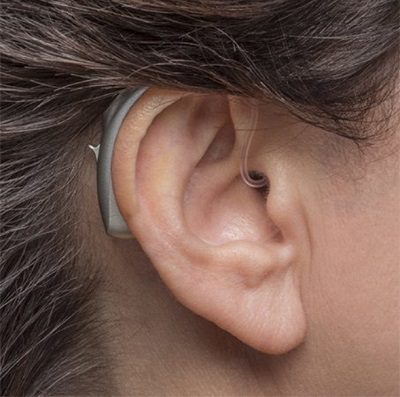
Behind-the-Ear (BTE)
Though BTE hearing aids look like older analog hearing aids, don’t let that fool you. Besides being lighter and more streamlined, their digital processing power far exceeds that of their ancestors. Enhanced by custom-formed earmolds for a more comfortable fit and open-canal earpieces that eliminate the “plugged up” feeling some users experience, BTE hearing aids are the most flexible, adaptable, and powerful hearing instruments available for all levels of hearing loss.

Mini BTE
Similar to their bigger brother, Mini BTEs come with a smaller case and use ultra-thin tubing to discreetly route sound into the ear. The soft tip at the end of the tubing sits in the ear canal but doesn’t occlude it, producing a more natural, open feeling as airflow and sound enter the ear naturally, while amplified sound enters through the tip. “Open fitting” works best for individuals with mild to moderate high-frequency losses.

Receiver-in-the Ear (RITE)
RITE hearing aids are modified BTE devices that feature a comfortable, open-fit design suited for nearly all types of hearing loss. The main difference involves locating the speaker of the instrument in the ear tip instead of in the main BTE body of the instrument. Similar to the Mini BTE, they are smaller and lighter weight but pack powerful technology to serve those with mild to severe hearing loss.
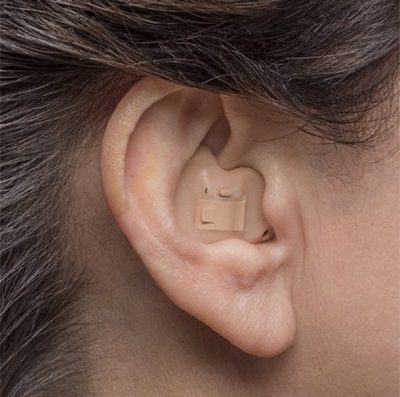
In-the-Ear (ITE)
ITE instruments combine technology and speaker inside a molded plastic shell that fits the contours of your outer ear canal. Full-shell in-the-ear technology produces powerful, clear sound for all degrees of treatable hearing loss and works well for those who wear glasses or use an oxygen cannula. The ease of adjustment, larger batteries with a longer life, rechargeability, and device connectivity are among the advantages of ITE over smaller in-the-canal devices.

In-the-Canal (ITC)
Smaller versions of ITE devices, ITC hearing aids are custom-molded to fit further into the ear canal instead of the outer ear area. They provide the same benefits of ITE users who wear glasses, an oxygen cannula, or hats but allow you to be a bit more active and offer greater wearing discretion. Individuals with mild to moderate hearing loss can benefit from this style, which includes the capacity to customize external controls to fit your needs.
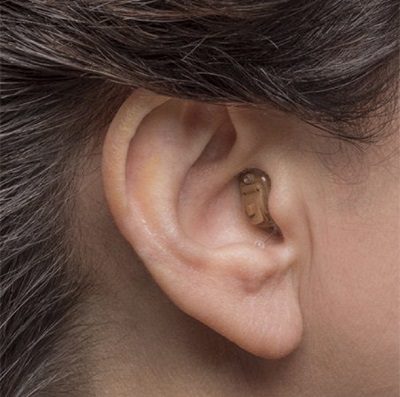
Completely-In-The-Canal (CIC)
Going deeper still, CIC devices fit deeper into the ear canal than ITC devices and require a tiny clear plastic post to insert and remove them. This can present a challenge to individuals who lack fine-dexterity. Comfortable and discreet, CIC devices provide a snug fit ideal for activity-filled days with friends and family, the reduction of wind interference for more natural hearing, and greater clarity without sacrificing too much when it comes to processing power.
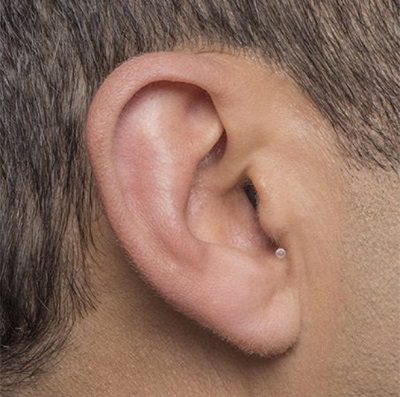
Invisible-In-the-Canal (IIC)
Custom molded to fit snugly near the second bend of the ear canal, IIC hearing aids are 100% invisible, digital, and fully programmable. They pack plenty of clarity and power into the tiniest of packages, providing the highest level of wearing discretion and serving those with a very active lifestyle. Individuals with all but the most severe degrees of hearing loss qualify for this style of device.
Latest News
Four Ways to Optimize Your Hearing in 2025
The Best Hearing Aids in 2025 | A Doctor of Audiology Tells All
What Impact Is Artificial Intelligence Having on Hearing Aids?
A Hearing Assessment Is Critical To Choosing The Right Hearing Aid
The prevalence of hearing aid dispensers, as well as the capacity for people to self-diagnose and self-treat by purchasing an OTC or online hearing device, has increased the potential to cause severe damage to your hearing with a poor-fitting, improperly programmed device. Your safer option is to consult a hearing care professional for a hearing assessment.
If you’d prefer a hearing instrument that will solve your hearing challenges rather than exacerbate them, submit the adjacent form in order to schedule a hearing assessment with our professional Hear in Texas audiologist.
"*" indicates required fields



